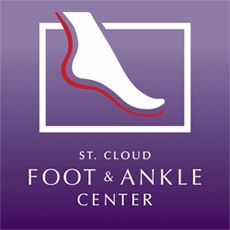 Heel pain can make daily activities like walking to the mailbox or climbing stairs feel unbearable. This all-too-common foot condition can stem from various causes, ranging from plantar fasciitis to heel spurs or other conditions. Heel pain often develops gradually before becoming severe enough to limit your daily activities, but it isn’t likely to go away or even get a bit better without proper treatment.
Heel pain can make daily activities like walking to the mailbox or climbing stairs feel unbearable. This all-too-common foot condition can stem from various causes, ranging from plantar fasciitis to heel spurs or other conditions. Heel pain often develops gradually before becoming severe enough to limit your daily activities, but it isn’t likely to go away or even get a bit better without proper treatment.
That’s where our team of caring, knowledgeable foot and ankle specialists comes in. We’re here for you, ready to provide the care you need to gain lasting relief by carefully evaluating your condition, reviewing your medical history, and discovering the underlying factors that are causing you to experience heel pain.
Understanding the Primary Causes of Heel Pain
Heel pain rarely appears without reason, and identifying the underlying cause is essential for effective treatment – and that’s what our foot and ankle specialists focus on first.
-
Plantar fasciitis is the most common cause of heel pain. It typically causes sharp, stabbing pain that's most severe with your first steps in the morning or after periods of rest.
-
Heel spurs develop when calcium deposits form on the underside of the heel bone, creating small, bony protrusions. While heel spurs themselves don't always cause pain, they can irritate surrounding tissues and contribute to plantar fasciitis symptoms.
-
Achilles tendonitis causes pain at the back of the heel and may be accompanied by swelling, stiffness, or tenderness along the tendon. It often affects athletes and people who suddenly increase their activity level.
-
Bursitis typically causes pain and swelling at the back of the heel, especially where the Achilles tendon attaches to the heel bone.
-
Stress fractures in the heel bone can develop from repetitive impact activities or sudden increases in activity level and cause deep, aching pain that worsens with weight-bearing activities and improves with rest.
These aren’t the only possible causes, but are among the most likely culprits. Discovering the underlying issue is the foundation of an effective treatment plan.
When to Seek Professional Care From Our Central Minnesota Podiatrists
Knowing when to seek professional help can prevent heel pain from becoming a chronic condition that significantly impacts your quality of life.
-
If your heel pain is severe, sudden in onset, or accompanied by numbness, tingling, or significant swelling, immediate evaluation is recommended.
-
Persistent symptoms lasting more than a few days despite rest and home care measures warrant professional evaluation. Don’t try to "walk through" heel pain; this can worsen your condition and prolong recovery time.
-
Heel discomfort that impacts daily activities, such as difficulty walking, climbing stairs, or standing for normal periods, indicates the need for professional treatment.
-
Heel pain that forces you to modify your normal activities or limits your participation in work or recreational pursuits should be evaluated promptly.
-
Recurring episodes of heel pain suggest underlying issues that need professional attention. Even if previous episodes resolved on their own, recurrent symptoms likely indicate the need for comprehensive evaluation, treatment, and preventive strategies.
-
Severe morning pain that makes it difficult to take your first steps of the day is a classic sign of plantar fasciitis or other heel conditions that aren’t likely to improve on their own.
Professional Treatment Options for Heel Pain Relief
Professional heel pain treatment begins with a thorough evaluation to determine the specific cause of your symptoms. At St. Cloud Foot & Ankle Center, our central Minnesota heel pain doctors use advanced diagnostic techniques, such as physical examination, gait analysis, and imaging studies when necessary, to develop personalized treatment plans.
-
Conservative treatments like rest and activity modification help reduce inflammation and allow damaged tissues to heal. Ice therapy applied for 15-20 minutes several times daily can provide immediate pain relief and reduce swelling in acute cases.
-
Stretching exercises targeting the plantar fascia, Achilles tendon, and calf muscles can improve flexibility and reduce tension on heel structures.
-
Custom orthotics designed specifically for your feet provide targeted support and cushioning to address foot structure abnormalities that contribute to heel pain. They can significantly reduce symptoms while preventing recurrence.
-
Advanced treatment options, such as acoustic wave therapy to stimulate healing or other specialized treatments, may be recommended for persistent cases that don't respond to conservative measures.
